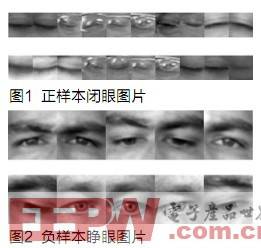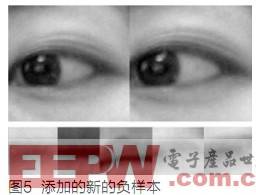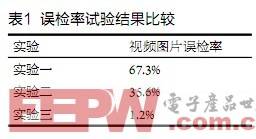Driver blink recognition based on Adaboost algorithm
Blinking is a physiological activity that opens and closes the eyes. The speed of blinking is affected by factors such as fatigue, emotional stress, types of behavior, number of sleep, degree of eye injury, disease, etc. [1 ~ 2]. Blink recognition is the basis of driver fatigue detection. In this paper, Adaboost algorithm [3] [4] [5] is used to train and detect the state of eye opening and closing, and classify the pictures of open eyes and closed eyes.
Adaboost algorithm
Adaboost is an adaptive boosTIng algorithm. Its principle is to combine some simple weak classifiers (rectangular features) with specific training needs (generally the requirements for detection rate and false detection rate) into a strong classifier. During detection, each strong classifier decides the rectangular features to be detected, and cascading these strong classifiers can generate an accurate and fast classifier. Its characteristic is that the detection speed is fast, because each strong classifier can veto the rectangular features to be detected, so the previous strong classifier can eliminate most of the wrong features.
The following introduces the training of the strong classifier by the Adaboost algorithm. The positive samples in this paper are pictures containing human eyes in various poses (open eyes, closed eyes, and glasses), and the negative samples are arbitrary pictures that do not contain eyes. Suppose the input n training samples are: {(x1, y1), (x2, y2), ...... (xn, yn)}, where xi is the input training sample, yi∈ {0,1} Respectively represent positive samples and negative samples, where the number of positive samples is l and the number of negative samples is m. n = l + m, the specific steps are as follows:
(1) Initialize the weight w1 of each sample, i ∈ D (i);
(2) For each t = 1, ..., T (T is the number of weak classifiers)
â‘ Normalize the weights to a probability distribution 
â‘¡For each feature f, train a weak classifier hj to calculate the weighted error rate of the weak classifier corresponding to all features ![]()
â‘¢Select the best weak classifier ht (with the smallest error rate): et
â‘£According to this best weak classifier, adjust the weight ![]()
Where ei = 0 means it was correctly classified, ei = 1
Indicates that it was misclassified 
(3) The final strong classifier is: 
Blink Recognition Based on Adaboost Algorithm
To ensure the real-time nature of image processing in the video stream, a specific algorithm must be used. The Adaboost algorithm can perform fast target detection due to its special algorithm mode. Therefore, the system selects the Adaboost algorithm for the positioning of our human eye state detection. The blink recognition system based on Adaboost mainly includes two modules: training and detection. The training process plays a decisive role.
training
The selection of samples is crucial, including two aspects. The first is the sample source. In this paper, BioID-EyeDatabase and AR face database (from the network) are used [6]. The sample database provides face images and eye coordinates. The eye coordinates are programmed with Matlab to extract the human eye. The positive samples select the closed-eye pictures from the cut-out human eye pictures, and the negative samples are the remaining open-eye pictures. The training process of the sample is to select the weak classifier according to the method described in the algorithm in Part 2 to form a strong classifier, and then cascade the strong classifiers into an effective classifier. The requirements for detection rate and false detection rate are given during training. For example, the detection rate is 0.99 and the false detection rate is 0.3. If there are n strong classifiers in total, the final detection rate is 0.99n, and the final false detection rate is 0.3n.
Testing
Detection is based on the characteristics of the classifier obtained by training is generally stored as an .xml file to detect the input picture. The classifier is a cascade classifier composed of several strong classifiers. The detection result is a series of target rectangles, that is, the position of the target in the image.
Analysis of results
In this paper, three different negative sample selection methods were used, and three comparative experiments were carried out.
Experiment 1: 582 positive-eye pictures of positive samples, normalized to 24 × 24, 1285 open-eye pictures of negative samples, positive and negative samples are shown in Figures 1 and 2, and the experimental results are shown in Figure 3.

From the experimental results, it can be seen that the eyebrows are mistakenly detected as closed-eye pictures, because the number and types of negative samples are small, resulting in a high false detection rate.

This paper proposes a new negative sample selection method, which provides a great help to expand the training sample size. It is to modify the program in Opencv [7] and use the already trained classifier to detect a large number of video pictures. Save the misdetected picture and add it to the negative sample as a new negative sample for the next training, and continue training, and then use the new classifier trained next time to continue to add negative samples. The negative sample interception software interface is shown in Figure 4.

Experiment 2: 582 positive-eye pictures of positive samples, the same as experiment 1, 2300 negative samples, including the negative samples collected from the negative sample interception software in addition to the negative samples in experiment 1. The added negative sample is shown in Figure 5.

The experimental results are shown in Figure 6.

From the experimental results, it can be seen that in the open-eye picture, a certain range outside the inner corner of the two eyes is mistakenly detected as closed eyes, indicating that the type of negative sample still does not meet the requirements. So continue to use the negative sample interception software to collect misdetected pictures as negative samples.

Experiment 3: 582 closed-eye pictures of positive samples, the same as experiment 1, 2965 negative samples, in addition to the negative samples in experiment 2, it also includes false detection pictures collected from the negative sample interception software. The added negative sample is shown in Figure 7.

The experimental results are shown in Figure 8.
From the experimental results, it can be seen that the classifier generated by the final negative sample training can effectively distinguish the state of open eyes and closed eyes, and the false detection rate is greatly reduced, indicating that such a negative sample selection method is effective.
The comparison of the false detection rate of the three experimental results is shown in Table 1. The false detection rate is the number of falsely detected pictures divided by the total number of pictures.

Conclusion
Through experiments, this paper proposes a new negative sample selection method, which provides us with a great help in expanding the training sample size, that is, using a negative sample interception software, by loading the previously trained classifier, continuous collection The part of the false detection is added to the negative sample, as a new negative sample for the next training, a new classifier is trained. Repeat this step continuously until you reach a classifier that produces satisfactory results. From the three experimental results, it can be seen that the false detection rate is gradually decreasing, which proves the effectiveness of the method. In the following experiments, iterative methods will be adopted layer by layer, and new trained classifiers will be used to increase negative samples until a more accurate classifier is trained, which will pave the way for the subsequent judgment of automobile driver fatigue detection.
K Pod Vape 3000-5500,K Pod Vape 5500 Puffs,K Pod Vape 3000 Puffs,Vapengin 5500 Puffs
Shenzhen Niimoo Innovative Technology Co., Ltd , https://www.niimootech.com